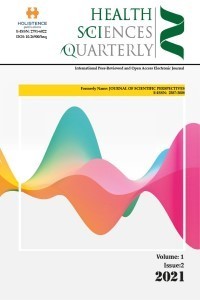ALGAE AND DIETARY DIETS
Algae involve several species of multicellular and macroscopic marine algae found in the coastal region between high to low tide in the sub-tidal region up to a depth where 0.01 % photosynthetic light is available. Based on their pigmentation, seaweeds were classified in to Chlorophyta (green algae), Phaeophyta (Brown algae) and Rhodophyta (Red algae). Algae are not classified as true plants. They lack an organized vascular system for absorbing nutrients. The root called the holdfast, the stem is the stripe and the leaf of the seaweed is the blade or frond. Like flowering plants, they are able to use chlorophyll to conduct the process of photosynthesis and create their own food for growth. In marine ecosystems, macroalgae communities provide nutrition, reproduction, and an accommodating environment for other living organisms. Algae play a vital role in various aspects compared to other aquatic resources. Because of these properties, macroalgae are some of the most important organisms maintaining the ecosystem’s stability. They are also excellent source of bioactive compounds such as carotenoids, dietary fibers, proteins, essential fatty acids, vitamins, minerals and important sources of medicines and fertilizers.
Keywords:
Algae, dietary diet nutritional, health.,
___
- ARASAKI S. ve ARASAKI T. (1983). Low calor ie, high nutrition vegetables from the sea to help look and feel better. Japan Publications, Tokyo, 196 p.
- CHANDINI, S.K., GANESAN, P., SURESH, P.V. ve BHASKAR, N. (2008). Seaweeds as a source of nutritionally benefical compounds-a review. Journal of Food Science and Technology, 45(1), 1-13.
- DURMAZ, Y., IŞIK, O., BANDARRRA, N.M., CİRİK, S., TURAN, G., & GÖKPINAR, Ş. (2002). Porphyridium cruentum (Rhodophyceae) yağ asitleri kompozisyonuna kurutma yöntemlerinin etkisi. Ege Journal of Fisheries and Aquatic Sciences, 19(1-2), 189-195.
- GÖKPINAR, Ş., GÖKSAN, T. ve DURMAZ, Y. (2001). PUFA kaynağı olarak mikroalgler, XI. Ulusal Su Ürünleri Sempozyumu, Hatay (pp. 779-785).
- KASIMALA M., MEBRAHTU L., PASIENCE M., ASGEDOM G. (2015). Review on Biochemical Composition and Nutritional Aspects of Seaweeds, Caribbean Jounrnal of SciTech., 3, 789-797.
- https://gaiadergi.com/hayatimizi-alglere-borcluyuz/
- https://www.livestrong.com/article/427504-list-of-foods-that-contain-algae/
- https://www.livestrong.com/article/458681-algae-as-a-food-source-for-humans/
- http://www.businessinsider.com/algae-is-the-superfood-of-the-future-2014-6
- https://www.webmd.com/vitamins-supplements
- Başlangıç: 2017
- Yayıncı: Holistence Publications
Sayıdaki Diğer Makaleler
Ozlem TONGUC YAYINTAS, Latife Ceyda İRKİN
Ramiro Sebastian VARGAS, Lourdes RUIZ, Maria Cristina Navas LEMA, Mustahsan SHUAIB
